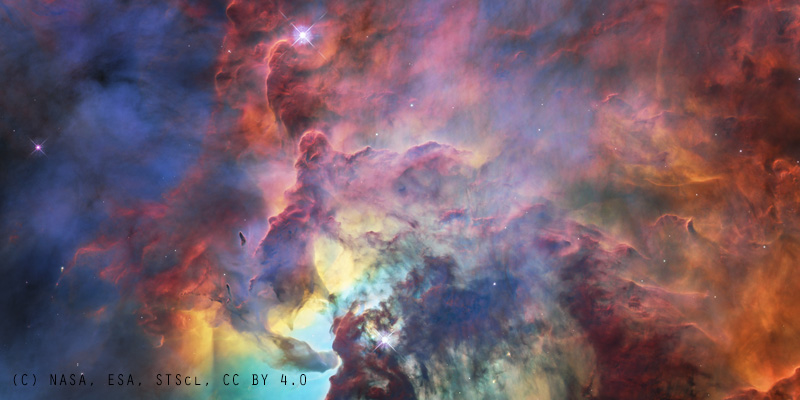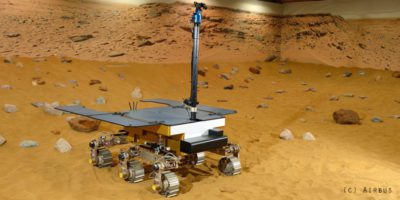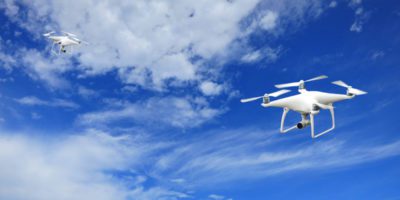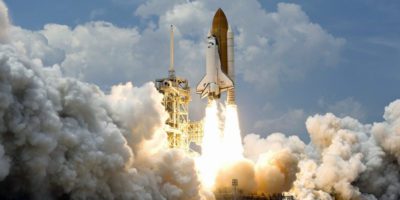Ersilia Vaudo Scarpetta is chief diversity officer at the European Space Agency, where she is currently based in Paris. She holds a degree in physics, with a specialisation in astrophysics, and she also has further qualifications in economics. During her career at ESA, she held several positions, including elaboration of high-level strategy, formulation of policies, international relations, strategic analysis, relations with member states, network with think tanks. Ersilia participated to the formulation of the first ESA Exploration programme, worked as coordinator of science and human spaceflight activities and had the responsibility as executive secretary of the Science and Technology Advisory Group on Exploration in charge of selecting experiments for exploration missions, including ExoMars.
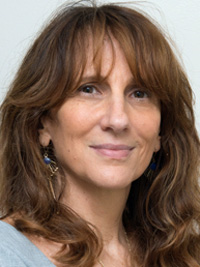
“…never take a NO for an answer. Take pleasure in stretching the limits of what could be possible…”
Gaining science ‘superpowers’
At the age of 17, I was, on one side, very interested in philosophy and literature, and on the other side, highly attracted by my mother’s profession. She had a degree in chemistry and biology – a quite rare feature for an Italian woman at that time – and a true passion for science.
As an example of her drive, we had in our kitchen different jars containing sugar or salt or other cooking stuff. In the spirit of encouraging me and my brothers to be exposed to science, she used to indicate only the chemical formula on the jars’ labels. You can imagine what happened when I used many spoons of NaCl (salt), instead of C6H12O6 (yes, sugar!) to prepare the cakes for the school bakery sale.
When I got to choose my field at the university, despite my varied interests, I decided to go for what I felt was the most challenging subject: physics. I wanted to stretch my perspective, be able to go beyond the realm of experience, and be confronted with the mysteries of the spaces around me.
I can tell you now that this choice has been key in defining the person I became, as it triggered a thorough transformation of my approach to life. By studying cosmology, quantum mechanics, general relativity, I was, in a way, gaining ‘superpowers’. I was feeling the sensation of being nothing more than a little spark, in an indifferent and silent Universe, while at the same time enjoying the great emotion of my consciousness, and this ability of asking for questions and striving for answers.
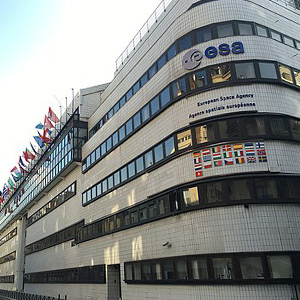
I deeply loved studying cosmology and general relativity. However, as it was in my nature to continuously look for new challenges, I decided to further broaden my horizons and undertake Ph.D. studies in political economics in Rome. I could not conclude my Ph.D. as in the meantime I got a job at the European Space Agency headquarters in Paris (to follow my boyfriend!) where I started working in December 1991.
The European Space Agency has represented for me the ideal place where nurturing my interest for space science, adding up to it he great experience of working in an international environment. I feel very privileged to work here.
My role
I am currently the agency’s chief diversity officer. The topic of diversity and inclusiveness (D&I) has been recently placed high on the ESA’s corporate agenda. Through this initiative, ESA intends to enhance its wealth of diversity, and at the same time ensure that the values and the objectives pursued through D&I actions become an inherent feature of the Agency’s policies and business practices. Last September, as part of this effort, ESA’s commitment towards diversity and inclusiveness has been made visible, reinforced and underlined in a policy statement.
Actually, diversity is already a distinctive feature of ESA and one of its greatest assets, reinforcing its international character. People from 22 European member states plus Canada – talking more than different 14 languages – are cooperating and solving problems every day by combining their different cultural backgrounds.
It is that richness of diversity, in competences, skills and points of view that allow us to achieve results that could be impossible to achieve on the effort of single nations, as making a robot landing on a spinning comet at 500 million km far from here.
Among the different activities undertaken to foster diversity and inclusiveness at ESA, a special focus has been put in ensuring that space jobs are increasingly attractive to women in ESA member states. We observe that space is recognised to be as one of the most science and technology inspirational sectors in Europe, and applications from women to ESA are quite steady.
Furthermore, although the situation is improving in terms girls graduating in STEM fields, this is still a “boys’ club”. As shown by the latest OECD’s reports, stereotypes play a great role in children’s choices, as parents are more likely to expect their sons, rather than their daughters, to enter a STEM career – even when boys and girls perform equally well in school.
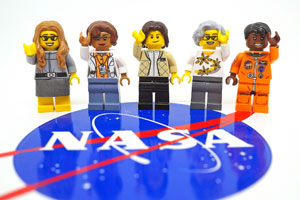
It becomes clear the necessity to challenge stereotypes in order to promote women’s participation in STEM fields. Science editor, writer and media producer, Maia Weinstock, from Massachusetts Institute of Technology, recently initiated a collaboration with LEGO to recently launch LEGO Women of NASA, a package based on five real-life female space pioneers, including scientists, astronauts and an astronomer. The European space industry is also engaging in fighting stereotypes through dedicated campaigns.
More affordable technology making space more accessible
With technologies becoming more and more affordable, the perimeter of space actors is changing as well. Only a handful of countries had capabilities to build and launch a satellite in the 1980s – today the globalisation of space appears to be a reality: in 2017 more than 70 countries invested at least $10 million in space programmes – almost the double with respect to 2003 and every continent is now involved.
Moreover, as space opens up to new public actors – with China leading the way – a new generation of companies and start-ups are coming forward rapidly. The club of ‘usual suspects’ has thus enlarged and the current space race has also opened up to a new community of astropreneurs.
Space is defined by many as the “wild west of our century”, able to attract brilliant entrepreneurs and new explorers in the quest of new challenges and a form of prestige, but also to the potential of considerable economic returns.
Actually, business opportunities do not lack: from nano-satellite technologies for communications to asteroid mining, the private sector’s interest in space exploration is growing at an increasingly faster pace, with space innovation unleashing new dynamic forces towards unexpected areas.
Furthermore, the ‘accessibility’ of space is gaining ground. In particular, the last few years have witnessed the start of what could be a revolution in the design, manufacture and deployment of satellites. If it still takes years of research and considerable financial resources to develop new rockets and spacecraft, small groups of students at university can today build micro and nano-satellites in-house and put them into orbit. Since the first launch in 2002, more than twenty-five countries have developed cubesats so far, thus triggering a revolution that promises to change the space scene as they have known it until today.
Future advances in space travel
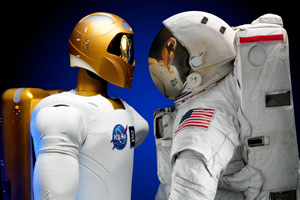
A number of human and robotic missions have already been scheduled and are expected to be launched in the next few years. In particular, innovative space capabilities are under development to enable robotic and human exploration in low-Earth orbit and in the lunar vicinity.
Orbiting just 400 km above us, the International Space Station will continue to provide facilities for science in weightlessness until the end of its life in 2024, while already by 2022 China will have launched the core and two other science modules of its new space station where to carry out scientific experiments. But over the next decade space agencies’ plans also envision investments for a series of missions to the lunar surface and on to Mars.
Europe is setting its sights on the Moon, preparing for a robotic landing in partnership with Russia as early as 2022 that will look for water ice that scientists believe may be present in the dark polar regions. US President, Donald Trump, recently spoke on NASA’s plans to go back to the Moon in the framework of a human spaceflight mission to be launched in the next few years.
Scheduled for the end of this year is, in fact, the Chinese Chang’e 4 mission, which will attempt the first-ever soft landing on the far side of the Moon. Then, in 2019, the new heavy-lift rocket Long March 5 will carry the Chang’e 5 lunar sample return mission, the first one since the last Soviet Union’s in 1976.
Reaching beyond low earth orbit, NASA’s new Orion vehicle, with a European service module at its core, will build bridges to Moon and Mars by sending humans further into space than ever before. It will also help to build a deep-space gateway located in lunar orbit, the most distant human outpost where we will learn how to live and work a thousand-times farther out in space than on the International Space Station.
Projects involving Mars do not lack as well. And apparently, 2020 will be a very good year. In 2020, the second mission of the ExoMars programme will be launched, featuring a European rover and a Russian surface platform that will reach the Red Planet in search of signs of life after a nine-month journey.
In the same year, China will send an orbiter, lander and rover as part of its first independent interplanetary mission, while NASA will launch its Mars 2020 Rover mission to collect core samples of rocks and seek traces of past microbial life. But what about the human exploration of Mars? Well, with all these robotic missions planned for the next few years, we will have to wait a bit longer to be realistically able to set foot of the Red Planet.
In fact, if SpaceX’s owner, Elon Musk, already talks about its colonisation plan, the necessary capabilities to achieve this ambition are still under study and will surely take some other years before being fully developed.
Become smarter and shoot higher
I looking forward to the sector enjoying new great challenges, e.g. exploration of the Solar System, new frontiers of human space flight, the understanding of our planet and fighting climate change, made possible thanks to the talents of all, if an increasingly diverse and inclusive organisation.
In conclusion, my advice for girls and women who are interested in working in space is never take a NO for an answer. Take pleasure in stretching the limits of what could be possible. Take failure as an opportunity to become smarter and shoot higher.
https://twitter.com/esadiversity
https://twitter.com/ersiliascarpett
European Space Agency headquarters image: By ESA, M. Trovatello [CC BY-SA 3.0-igo (https://creativecommons.org/licenses/by-sa/3.0-igo)], from Wikimedia Commons

